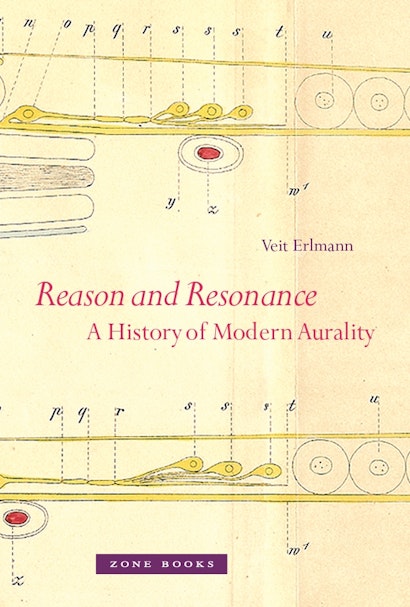Reason and Resonance: A History of Modern Aurality


Hardcover
- Price:
- $28.95/£22.00
- ISBN:
- Published:
- Sep 17, 2010
- Copyright:
- 2010
- Pages:
- 424
- Size:
- 6 x 9 in.
- 25 b/w illus.
- Main_subject:
- Philosophy
Paperback
Hearing has traditionally been understood as the second sense — less rational and modern than seeing, the master of all senses, the first sense. Reason and Resonance is the first full-length study to explode this myth by reconstructing the history of aurality and the process through which the ear assumed a central role in modern culture and rationality.
From the beginning of the seventeenth century to the early decades of the twentieth, scientists believed that resonance was the operative mechanism of the human ear. To comprehend the act of hearing was to recognize the existence of a sympathetic resonance between vibrating air and various parts of the inner ear. But resonance, by extension, also entailed adjacency, sympathy, and the collapse of the boundary between perceiver and perceived — phenomena usually thought of as polar opposites of reason.
As Veit Erlmann argues, however, with the emergence of resonance as the centerpiece of modern aurality, a new type of epistemology triumphed, one involving an intimate and complex relation between reason and resonance. From 1633 to 1928, philosophy and otology struggled to comprehend a set of strikingly similar problems regarding the foundations of subjectivity, truth, and sensation. Focusing on the materiality and material culture of listening, Erlmann lucidly elaborates a history of aurality that simultaneously provides a new history of modernity wherein the modern subject is neither deaf nor dumb, ocularcentric or logocentric. The subject of modernity takes shape in its uneasy struggles and truces with “cogito” and “audio,” the effect of the intertwined histories of thinking and hearing.
Reason and Resonance begins with a transformative interpretation of Descartes that counters the philosopher’s usual profile as the “founding father of the modernist visualist paradigm.” Erlmann then traces the genealogy of the “intimate animosity” between reason and resonance through a series of interrelated case studies involving a variegated cast of otologists, philosophers, physiologists, pamphleteers, and music theorists. More an auditory history of knowledge than a history of auditory culture, Reason and Resonance follows the movement of modernity through a sense hitherto unheard and thought.